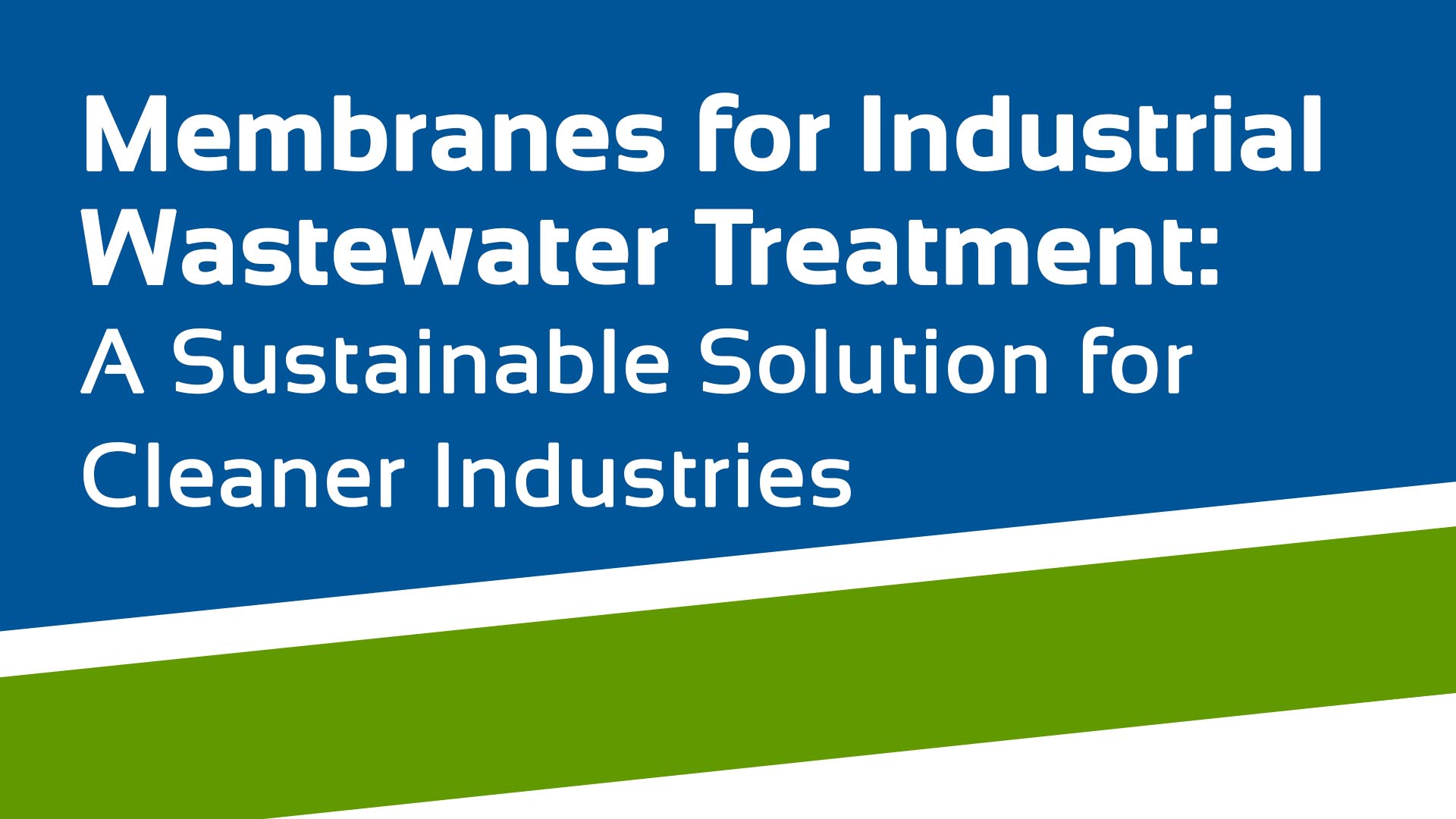
Membranes for Industrial Wastewater Treatment: A Sustainable Solution for Cleaner Industries
Industrial processes play a vital role in powering economies and providing essential goods and services. However, these processes often generate large volumes of wastewater that can be laden with pollutants, chemicals, and other contaminants harmful to the environment and public health. To address these challenges, membranes have emerged as cutting-edge technology for industrial wastewater treatment. This article explores the significance of membranes in industrial wastewater treatment, their different types, and their benefits in promoting sustainable and cleaner industrial practices.
The Role of Membranes in Industrial Wastewater Treatment
Membranes are semi-permeable barriers that can selectively separate substances based on size, charge, or chemical properties. In industrial wastewater treatment, membranes serve as an essential component of advanced treatment processes. They are designed to remove suspended solids, dissolved pollutants, heavy metals, and other harmful compounds, producing treated effluent that meets stringent environmental discharge standards.
Types of Membranes Used in Industrial Wastewater Treatment
Reverse Osmosis (RO) Membranes:
Reverse osmosis membranes are widely used in various industries for desalination and concentration purposes. In wastewater treatment, RO membranes effectively remove dissolved salts, organic compounds, and other contaminants. RO is particularly useful in treating wastewater from industries such as electronics, power generation, and food and beverage processing.
Ultrafiltration (UF) Membranes:
UF membranes are well-suited for the removal of suspended solids, bacteria, and macromolecules. They operate at a slightly larger pore size than RO membranes, making them ideal for pretreatment applications in industrial wastewater treatment processes.
Nanofiltration (NF) Membranes:
NF membranes offer a middle ground between RO and UF membranes in terms of pore size. They are effective in removing divalent ions, such as calcium and magnesium, along with certain organic compounds. NF is commonly used in industries where water softening and color removal are essential, such as textile and leather manufacturing.
Microfiltration (MF) Membranes:
MF membranes are designed to remove larger particles, bacteria, and some colloids from wastewater. They find applications in industries such as pharmaceuticals, dairy processing, and biotechnology, where sterilization and fine particle removal are crucial.
Benefits of Membranes in Industrial Wastewater Treatment
High Treatment Efficiency: Membrane-based processes offer excellent treatment efficiency, producing high-quality effluent that meets stringent regulatory standards. The selective separation capability of membranes ensures the removal of a wide range of contaminants from wastewater.
Water Reuse and Resource Recovery: Treated water from membrane filtration can often be reused within industrial processes, reducing the demand for freshwater intake and conserving valuable water resources. Additionally, membranes facilitate the recovery of valuable resources, such as metals and chemicals, from industrial wastewater, promoting circular economy practices.
Compact Footprint: Membrane systems have a smaller physical footprint compared to conventional treatment technologies, making them suitable for industries with limited space for wastewater treatment facilities.
Reduced Chemical Usage: Membrane-based processes typically require fewer chemicals for treatment, leading to cost savings and a reduction in chemical waste generation.
Flexible and Scalable: Membrane systems are flexible and can be tailored to suit the specific needs of different industries and wastewater streams. They can also be easily scaled up or down based on the volume of wastewater generated.
Membranes have revolutionized industrial wastewater treatment, offering a sustainable solution for industries to manage their wastewater responsibly. As industries face increasing pressure to minimize their environmental impact, membrane technologies provide a means to achieve cleaner production practices, water reuse, and resource recovery. With ongoing research and technological advancements, membranes will continue to play a pivotal role in promoting a greener and more sustainable industrial landscape, ultimately contributing to a cleaner and healthier world for future generations.


